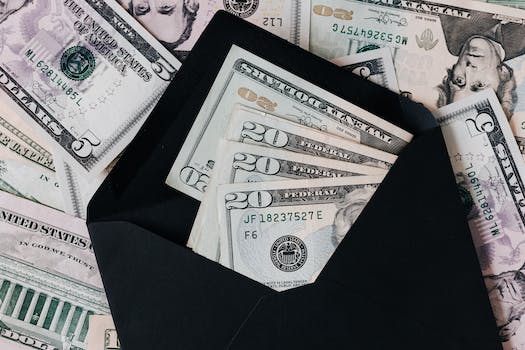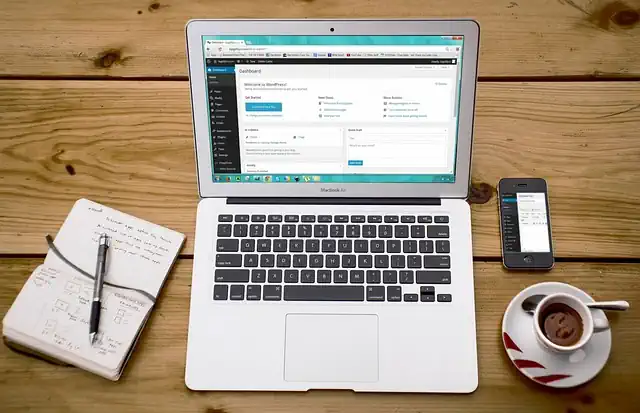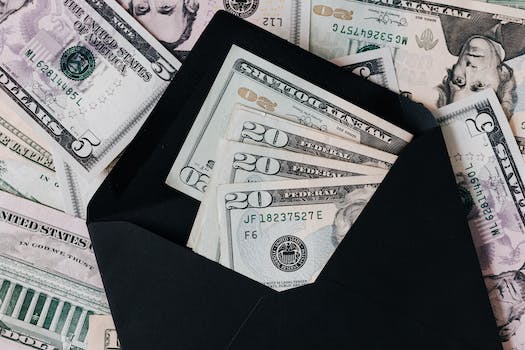How To Save Money In Your 20s
Introduction

Saving money in your 20s is crucial for building a strong financial foundation for the future. It can be challenging to balance expenses such as rent, student loans, and social activities, but with the right strategies, it is possible to save money and achieve financial goals. In this article, we will discuss some tips on how to save money in your 20s.
Create a Budget Plan
Saving money is a crucial aspect of financial stability, especially in your 20s. It is the time when you start building your career, paying off student loans, and planning for your future. However, it can be challenging to save money when you have so many expenses to take care of. That’s why creating a budget plan is essential to help you manage your finances and save money.
The first step in creating a budget plan is to determine your income. This includes your salary, bonuses, and any other sources of income. Once you have a clear idea of your income, you can start tracking your expenses. This includes everything from rent, utilities, groceries, transportation, and entertainment.
To track your expenses, you can use a spreadsheet or a budgeting app. This will help you keep track of your spending and identify areas where you can cut back. For example, if you notice that you’re spending too much on eating out, you can start cooking at home more often to save money.
Once you have a clear idea of your income and expenses, you can start creating a budget plan. This involves setting financial goals and allocating your money accordingly. For example, you can set a goal to save 20% of your income each month and allocate the rest towards your expenses.
It’s important to prioritize your expenses based on your needs and wants. Your needs include things like rent, utilities, and groceries, while your wants include things like entertainment and travel. By prioritizing your expenses, you can ensure that you’re not overspending on things that are not essential.
Another important aspect of creating a budget plan is to plan for unexpected expenses. This includes things like car repairs, medical bills, and emergency travel. It’s important to set aside some money each month for these expenses so that you’re not caught off guard when they arise.
One way to save money is to cut back on unnecessary expenses. This includes things like eating out, buying expensive clothes, and going out to bars and clubs. By cutting back on these expenses, you can save a significant amount of money each month.
Another way to save money is to look for ways to reduce your bills. This includes things like negotiating your rent, switching to a cheaper phone plan, and using coupons when shopping for groceries. By reducing your bills, you can save money without sacrificing your quality of life.
In conclusion, creating a budget plan is essential to help you save money in your 20s. It involves tracking your income and expenses, setting financial goals, prioritizing your expenses, planning for unexpected expenses, cutting back on unnecessary expenses, and reducing your bills. By following these steps, you can take control of your finances and build a solid foundation for your future. Remember, it’s never too early to start saving money, and every little bit counts.
Cook Your Own Meals
Cook Your Own Meals
One of the biggest expenses for most people is food. Eating out can be convenient, but it can also be very expensive. If you want to save money in your 20s, one of the best things you can do is learn how to cook your own meals.
Cooking your own meals can be a lot of fun, and it can also be a great way to save money. When you cook your own meals, you can control the ingredients that go into your food, which means you can make healthier choices. You can also save money by buying ingredients in bulk and cooking in larger quantities.
If you’re new to cooking, don’t worry. There are plenty of resources available to help you get started. You can find recipes online, in cookbooks, or even from friends and family members. You can also take cooking classes or watch cooking shows to learn new techniques and get inspiration for new dishes.
When you’re first starting out, it’s a good idea to keep things simple. Start with easy recipes that don’t require a lot of ingredients or complicated techniques. As you become more comfortable in the kitchen, you can start to experiment with more complex dishes.
One of the best things about cooking your own meals is that you can make a lot of food for very little money. For example, you can make a big pot of soup or chili and eat it for several days. You can also make your own snacks, like granola bars or trail mix, which can be much cheaper than buying pre-packaged snacks.
Another way to save money on food is to plan your meals in advance. Take some time each week to plan out what you’re going to eat for the week. This will help you avoid impulse purchases and ensure that you have everything you need to make your meals.
When you’re planning your meals, try to use ingredients that are in season. This will not only save you money, but it will also ensure that your food is fresh and flavorful. You can also look for sales and discounts on ingredients to save even more money.
If you’re really serious about saving money on food, you can also consider growing your own fruits and vegetables. Even if you don’t have a lot of space, you can grow herbs or small vegetables in pots on your balcony or windowsill. Not only will this save you money, but it can also be a fun and rewarding hobby.
In addition to saving money, cooking your own meals can also be a great way to socialize. Invite friends over for a potluck dinner or host a cooking party where everyone brings a dish to share. This can be a great way to try new foods and learn new cooking techniques.
In conclusion, cooking your own meals is a great way to save money in your 20s. It can be a fun and rewarding hobby, and it can also help you make healthier choices. By planning your meals in advance, using seasonal ingredients, and buying in bulk, you can save a lot of money on food. So why not give it a try? Your wallet (and your taste buds) will thank you.
Use Public Transportation
Saving money in your 20s can be a daunting task, especially when you’re just starting out in your career. However, there are many ways to cut back on expenses and save money without sacrificing your quality of life. One of the easiest ways to save money is by using public transportation.
Public transportation is a cost-effective way to get around town. Instead of spending money on gas, car maintenance, and parking fees, you can use public transportation to get to work, school, or other destinations. Many cities offer a variety of public transportation options, including buses, trains, and subways. By using these services, you can save hundreds or even thousands of dollars each year.
Another benefit of using public transportation is that it’s better for the environment. Cars emit harmful pollutants into the air, contributing to climate change and other environmental problems. By using public transportation, you can reduce your carbon footprint and help protect the planet.
If you’re new to using public transportation, it can be a bit intimidating at first. However, with a little bit of practice, you’ll soon become a pro. Here are some tips to help you get started:
1. Plan your route in advance. Before you head out, take some time to plan your route. Look up the schedules and routes for the buses, trains, or subways you’ll be using. This will help you avoid getting lost or missing your ride.
2. Get a transit pass. Many cities offer transit passes that allow you to ride the bus, train, or subway for a discounted rate. These passes are often available for purchase online or at local transit stations.
3. Be prepared for delays. Public transportation can be unpredictable at times, so it’s important to be prepared for delays. Make sure you have a book or some other form of entertainment to keep you occupied if you have to wait for your ride.
4. Be respectful of other passengers. When using public transportation, it’s important to be respectful of other passengers. Keep your voice down, don’t take up more than one seat, and avoid eating or drinking on the bus or train.
5. Use your time wisely. One of the benefits of using public transportation is that it gives you some extra time to read, work, or relax. Use this time wisely to catch up on emails, read a book, or just enjoy some quiet time.
In addition to saving money and helping the environment, using public transportation can also be a great way to meet new people. You never know who you might run into on the bus or train, and striking up a conversation with a fellow passenger can be a great way to make new friends.
Overall, using public transportation is a smart and cost-effective way to get around town. By following these tips and making public transportation a part of your daily routine, you can save money, reduce your carbon footprint, and enjoy all the benefits that come with using public transportation. So why not give it a try? Your wallet (and the planet) will thank you.
Shop Secondhand
When you’re in your 20s, it’s easy to get caught up in the excitement of newfound independence and the desire to live life to the fullest. However, it’s also important to start thinking about your financial future. One of the best ways to do this is by saving money. And one of the easiest ways to save money is by shopping secondhand.
Shopping secondhand doesn’t mean sacrificing style or quality. In fact, it can be a fun and rewarding experience. Here are some tips for how to save money in your 20s by shopping secondhand.
First, consider the benefits of buying used items. Not only is it cheaper, but it’s also better for the environment. By buying secondhand, you’re reducing the demand for new products, which means less energy and resources are used in the manufacturing process. Plus, you’re keeping items out of landfills and giving them a second life.
Next, think about what items you can buy secondhand. Clothing is an obvious choice, but there are many other items you can find used as well. Furniture, home decor, books, and electronics are just a few examples. You can even find secondhand wedding dresses and engagement rings if you’re planning a wedding.
When it comes to clothing, there are many options for finding secondhand items. Thrift stores, consignment shops, and online marketplaces like eBay and Poshmark are all great places to start. You can also attend clothing swaps with friends or check out local Facebook groups for buying and selling used clothing.
When shopping for furniture and home decor, check out estate sales, garage sales, and Craigslist. You can often find high-quality items for a fraction of the cost of buying new. Just be sure to inspect items carefully before purchasing to make sure they’re in good condition.
Books are another item that can easily be found secondhand. Check out used bookstores or online marketplaces like Amazon or AbeBooks. You can often find rare or out-of-print books for a fraction of the cost of buying new.
Electronics can be a bit trickier to buy secondhand, but it’s still possible. Check out refurbished items from reputable sellers or look for used items on eBay or Craigslist. Just be sure to do your research and make sure you’re buying from a trustworthy source.
One of the best things about shopping secondhand is the thrill of the hunt. You never know what treasures you might find, and it can be a fun and rewarding experience to score a great deal on a high-quality item. Plus, you’ll be doing your part to reduce waste and save money in the process.
Of course, there are some items that you should always buy new. Underwear, for example, is not something you want to buy used. And certain items like mattresses and car seats should always be purchased new for safety reasons.
In conclusion, shopping secondhand is a great way to save money in your 20s. Not only is it cheaper, but it’s also better for the environment. By buying used items, you’re reducing the demand for new products and keeping items out of landfills. Plus, it can be a fun and rewarding experience to score a great deal on a high-quality item. So next time you’re in the market for something, consider checking out secondhand options first. You might be surprised at what you find.
Cut Out Unnecessary Subscriptions
As a young adult in your 20s, it’s easy to get caught up in the excitement of newfound independence and the desire to experience everything life has to offer. However, it’s important to remember that financial responsibility is a crucial aspect of adulthood. One of the easiest ways to save money in your 20s is to cut out unnecessary subscriptions.
Subscription services have become increasingly popular in recent years, offering everything from streaming services to meal delivery kits. While these services can be convenient and enjoyable, they can also add up quickly and drain your bank account. Here are some tips for cutting out unnecessary subscriptions and saving money in your 20s.
First, take inventory of all the subscription services you currently have. This includes streaming services like Netflix and Hulu, meal delivery kits like Blue Apron, and even gym memberships. Make a list of each service and how much you’re paying for it each month.
Next, evaluate each subscription and determine if it’s truly necessary. For example, if you have multiple streaming services, consider which ones you use the most and cancel the others. If you’re not using your gym membership regularly, consider canceling it and finding alternative ways to exercise.
Another way to save money on subscriptions is to take advantage of free trials. Many subscription services offer free trials for new customers, ranging from a few days to a few weeks. Take advantage of these trials to test out the service and determine if it’s worth the cost. Just be sure to cancel before the trial period ends to avoid being charged.
If you do decide to keep a subscription service, look for ways to save money on it. Many services offer discounted rates for students or military personnel, so be sure to take advantage of these discounts if you’re eligible. You can also try negotiating with the service provider to see if they’ll offer you a lower rate.
Finally, consider alternative options to subscription services. For example, instead of paying for a meal delivery kit, try meal prepping on your own. Instead of paying for a gym membership, try working out at home or going for a run outside. There are often cheaper or even free alternatives to subscription services that can help you save money.
Cutting out unnecessary subscriptions is a simple yet effective way to save money in your 20s. By evaluating each subscription and determining if it’s truly necessary, taking advantage of free trials and discounts, and exploring alternative options, you can significantly reduce your monthly expenses. Remember, financial responsibility is key to a successful adulthood, and cutting out unnecessary subscriptions is a great place to start.
Find Free or Low-Cost Entertainment
Are you in your 20s and struggling to save money? You’re not alone. Many young adults find it challenging to balance their desire for fun and their need to save money. Fortunately, there are plenty of ways to enjoy yourself without breaking the bank. In this article, we’ll explore some tips for finding free or low-cost entertainment.
First, consider exploring your local community. Many cities and towns offer free events throughout the year, such as concerts, festivals, and art shows. Check your city’s website or social media pages to see what’s happening in your area. You might be surprised at how many free events are available.
Another option is to take advantage of your local library. Libraries offer more than just books. Many libraries have DVDs, CDs, and even video games available for checkout. You can also attend free events at the library, such as book clubs, movie screenings, and author talks.
If you’re a fan of the outdoors, consider going for a hike or a bike ride. Many parks and trails are free to use and offer beautiful scenery. You can also pack a picnic and make a day of it. Just be sure to check the weather forecast before you go.
If you’re looking for something more social, consider hosting a game night with friends. You can play board games, card games, or even video games. You can also have a potluck dinner to save money on food. Hosting a game night is a great way to have fun without spending a lot of money.
Another option is to volunteer in your community. Many organizations are always looking for volunteers to help with events or projects. Not only will you be helping others, but you’ll also be able to meet new people and have fun while doing it.
If you’re a fan of the arts, consider attending a free or low-cost performance. Many theaters offer discounted tickets for students or young adults. You can also check your local college or university for free performances by their students.
Finally, consider exploring the world of online entertainment. There are plenty of free or low-cost options available, such as streaming services, podcasts, and online games. You can also find free e-books and audiobooks at your local library.
In conclusion, there are plenty of ways to enjoy yourself without spending a lot of money. By exploring your local community, taking advantage of your local library, enjoying the outdoors, hosting a game night, volunteering, attending free or low-cost performances, and exploring online entertainment, you can have fun while still saving money. Remember, it’s important to find a balance between enjoying yourself and saving money. With a little creativity and effort, you can do both.
Start Investing Early
Saving money in your 20s can be a daunting task, especially when you’re just starting out in your career. However, it’s important to start saving early so that you can build a solid financial foundation for your future. One of the best ways to do this is by investing your money wisely.
Investing may seem intimidating, but it’s actually quite simple. The key is to start early and be consistent. The earlier you start investing, the more time your money has to grow. Even if you can only afford to invest a small amount each month, it’s better than not investing at all.
One of the easiest ways to start investing is through a 401(k) plan. If your employer offers a 401(k), take advantage of it. A 401(k) is a retirement savings plan that allows you to contribute a portion of your pre-tax income to a retirement account. Many employers also offer a matching contribution, which means they will match a percentage of your contribution up to a certain amount. This is essentially free money, so be sure to take advantage of it.
Another option for investing is a Roth IRA. A Roth IRA is a retirement account that allows you to contribute after-tax dollars. The money in a Roth IRA grows tax-free, and you can withdraw it tax-free in retirement. This is a great option if you expect to be in a higher tax bracket in retirement than you are now.
If you’re not sure where to start with investing, consider working with a financial advisor. A financial advisor can help you create a personalized investment plan based on your goals and risk tolerance. They can also help you navigate the complex world of investing and make informed decisions about where to put your money.
When it comes to investing, it’s important to diversify your portfolio. This means investing in a variety of different assets, such as stocks, bonds, and real estate. Diversification helps to reduce risk and maximize returns. It’s also important to regularly review and adjust your portfolio as needed to ensure that it continues to align with your goals and risk tolerance.
In addition to investing, there are other ways to save money in your 20s. One of the most important is to create a budget and stick to it. A budget helps you to track your expenses and identify areas where you can cut back. It also helps you to prioritize your spending and ensure that you’re saving enough each month.
Another way to save money is to avoid debt as much as possible. This means avoiding high-interest credit cards and loans, and only taking on debt when it’s absolutely necessary. If you do have debt, focus on paying it off as quickly as possible to avoid paying unnecessary interest.
Finally, it’s important to be mindful of your spending habits. This means avoiding impulse purchases and only buying things that you truly need. It also means taking advantage of discounts and deals whenever possible, and being willing to shop around for the best prices.
In conclusion, saving money in your 20s is essential for building a solid financial foundation for your future. Investing is one of the best ways to do this, and it’s important to start early and be consistent. Other ways to save money include creating a budget, avoiding debt, and being mindful of your spending habits. By following these tips, you can set yourself up for financial success in the years to come.
Conclusion
Conclusion: Saving money in your 20s is crucial for building a strong financial foundation for the future. By creating a budget, avoiding unnecessary expenses, and investing in a retirement account, you can set yourself up for long-term financial success. It’s important to start early and make saving a priority, even if it means making some sacrifices in the short-term. With discipline and determination, you can achieve your financial goals and enjoy a secure financial future.






